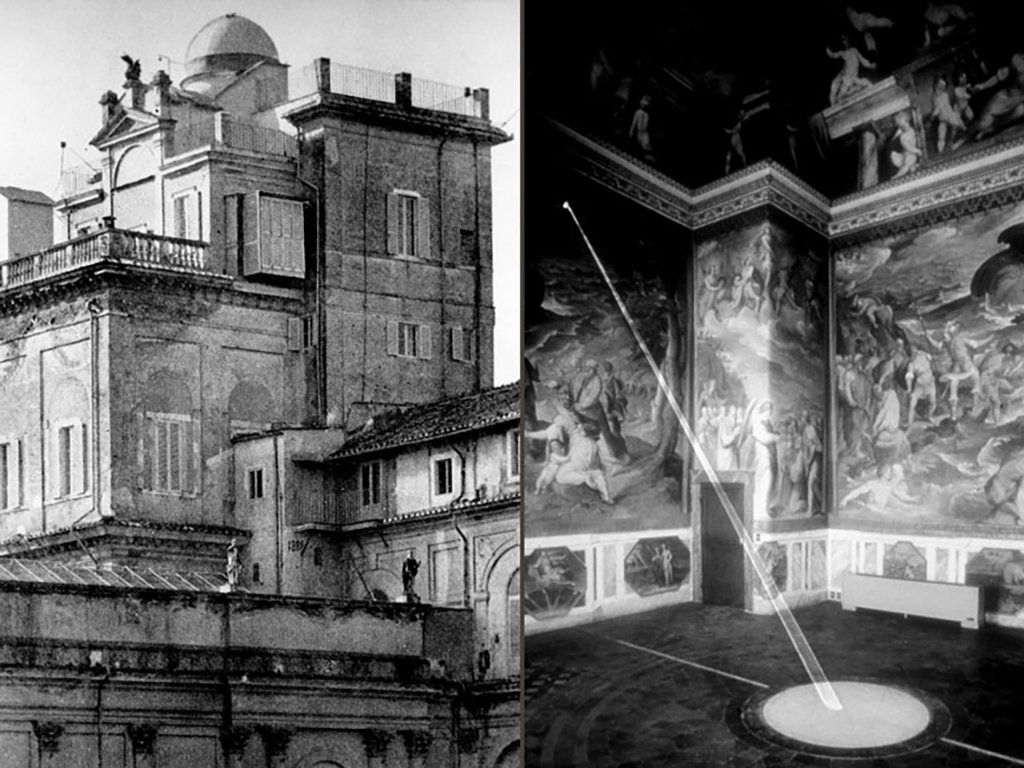
Tower of the Winds

This tower was built between 1578 and 1580 to demonstrate the astronomical motivation for the reform of the calendar, commissioned by Pope Gregory XIII.
This building, also known as the Gregorian Tower or Gregorian Observatory, includes the Sala della Meridiana, (Meridian Room) created by the Pontifical cartographer Ignazio Danti. A small hole is located in the south wall of this room at a height of about 5 meters; a ray of sunlight passing through this hole falls is focused on the floor, where there is a long marble strip oriented north-south, passing through a large circle in the center of the room. The meridian line is inserted along this marble strip and the signs of the zodiac are cut into it at the positions marking where the sunbeam coming through the hole falls at noon on the day when the sun enters each respective constellation. One position, of course, coincides with the vernal and autumnal equinoxes.
By observing the discrepancy of the date of the sunbeam’s equinox position with the calendar date of the beginning of sping and fall, Gregory XIII is said to have come to the personal realization of the absolute need for the reform of the calendar (which had already been undertaken).
At the end of the 18th century, the first astronomical instruments were installed in the Tower of the Winds; over time these were lost. But 70 years later the building was given new life with the re-foundation of the Vatican Observatory, commissioned by Pope Leo XIII, who set up its first headquarters inside the Tower.
